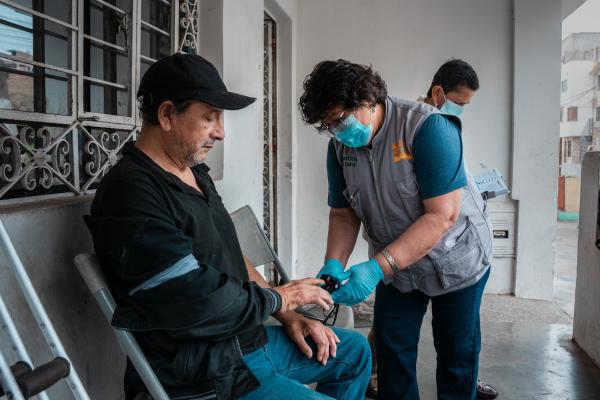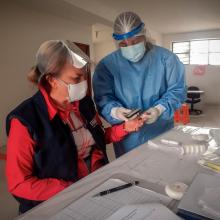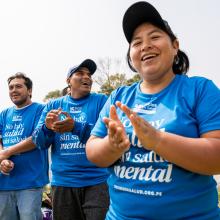One of the biggest challenges in dealing with diabetes is the abandonment of treatment by those diagnosed. It is one of the main problems that the Centro de Salud Materno Infantil (CSMI) Mexico, located in the district of San Martin de Porres, has to deal with.
“We have patients who come for the first few months and then they disappear. Then they come back with high glucose, despite not presenting symptoms,” Carlos Aguilar, physician in charge of the Noncommunicable Damage Strategy at CSMI Mexico, points out in this regard.
Diabetes, a chronic disease on the rise in our population, caused a total of 6,643 deaths in Peru in 2019, according to the Pan American Health Organization (PAHO). Of these, 58% corresponded to people over 70 years of age and 41% to individuals aged 30 to 69.
Among the main factors for treatment abandonment at CSMI Mexico, Fabiola Mautino, professional of the Noncommunicable Diseases (NCD) Program of Socios En Salud (SES), lists the lack of access to appointments and patients’ difficulties in covering the cost of transportation.
“There are many patients who are older adults and live alone. Sometimes they don’t dare go to the health facility for fear of falling or having something happen to them. That’s why accompaniment is fundamental in this process,” he says.
In response to this challenge, CSMI Mexico has implemented an accompaniment model, where Socios En Salud staff play a crucial role in the continuity of diabetes treatment.
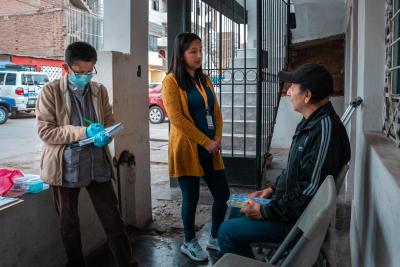
La agente comunitaria Isabel Santos, junto con Fabiola Mautino, profesional del proyecto ECSI del Programa de Enfermedades No Transmisibles de Socios En Salud, realizan seguimiento a Juan Aguilar, diagnosticado con diabetes.
Foto de Julio López / SES
Reintegrating people with diabetes: a step towards better health
Thanks to Socios En Salud’s accompaniment model, patients who stopped their treatment are returning to the health system to resume their medical follow-up and maintain their adherence. Today, 70% of the 160 people that SES provides follow-up not only resumed their treatment, but have also maintained it. A significant achievement in diabetes care.
“It has been quite important for me because they have been looking after my health, my medicines and everything that relates to what I have gone through in this diabetes. Now, thanks to the people who have accompanied me quite a bit, the disease has gone into remission,” says Carmen Mendoza, a woman diagnosed with type 2 diabetes.
Community agents are an essential piece in this process. They manage medical appointments, accompany the transfer and sometimes even facilitate the purchase of medicines. This comprehensive service has changed the perspective and attitude of many patients toward their treatment.
“It is important to get close to people, to make a diagnosis of how they live and how they manage their disease. I have the opportunity to be more empathetic so that they are encouraged to go to the health center and their treatment is effective,” says community agent Corita Chisquipama, who along with three colleagues visit homes in search of patients.
The success of this intervention goes beyond reintegration; it is a new approach to the care of people with chronic diseases. This program gives many back the possibility of living with fewer complications.
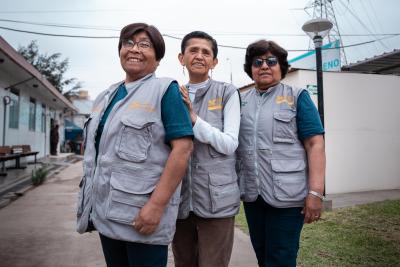
Las agentes comunitarias Ana García, Isabel Santos y Corita Chisquipama forman parte de la intervención de Socios En Salud que brinda seguimiento a 160 personas con diabetes en el distrito limeño de San Martín de Porres.
Foto de Julio López / SES
Accompaniment as a replicable healthcare model
For Dr. Carlos Aguilar, the Socios En Salud intervention is an example of care that should be extended to other healthcare facilities. “We have seen that patients we were not seeing are approaching us and, when they don’t get an appointment from SES, they are already concerned about their disease themselves,” he says.
Also, the accompaniment model allows patients to arrive at the center already prepared for their consultation. “They arrive with their glucose results, saving time in diagnosis,” adds Aguilar, who sees how this dynamic optimizes CSMI Mexico’s resources.
The positive impact is not only felt by patients, but also by healthcare staff, who can now spend more time on the consultation and less on the logistics of managing appointments and results. “This strategy should be replicated in other centers to be able to have more patients not only better controlled, but to improve their health,” stresses the physician.
And the fact is that replicating this model of accompaniment would make it possible to care for a greater number of people with chronic diseases.
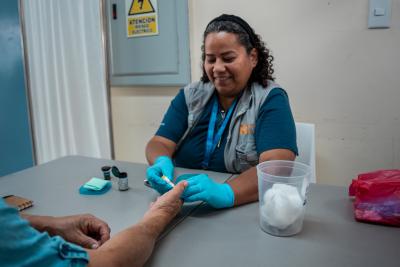
La agente comunitaria Aurita Meneses brinda soporte en las pruebas a los pacientes de diabetes del CSMI México.
Foto de Julio López / SES
From patient to participant: the active role that accompaniment fosters
Constant attention fosters a proactive attitude in patients about their illness, which makes a difference in their adherence to treatment. The Partners In Health ENT Program not only brings the patient back into the system, but makes him or her an active participant.
“We ourselves have seen the need to involve more people in this care process. Now, the patient is concerned with understanding his disease and its controls,” explains the CSMI Mexico physician.
This model of accompaniment changes the patient’s view of his own role in the treatment. Shared responsibility between the healthcare system and the patient has been shown to improve health outcomes in chronic diseases.
For patients with diabetes, receiving close accompaniment increases their confidence and allows them to overcome barriers such as fear of falling, lack of family support and economic limitations in accessing their appointments.
Involvement and shared responsibility are key to success in treatment. By taking on a more engaged role, patients perceive diabetes not just as a burden, but as a manageable condition with the right support.
Your donation makes a difference. Contribute and help us bring the cure against social injustice to more communities.
